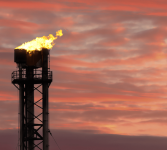Does your climate risk plan cover extreme heat? 4 questions to consider
3 min read
The heat we’ve been experiencing this summer is a situation of our own making, and it’s the tip of the iceberg of what the planet can expect if humans don’t change our consumption and production habits, according to climate scientists.
The record-breaking temperatures in June and July are a taste of what the world looks like when thermometers rise above 1.5 degrees Celsius — the threshold that the Paris Agreement is trying to avoid — and it provides a real-world view on the risks associated with failing to include those considerations in risk planning scenarios, said David Wei, managing director of corporate sustainability and ESG strategy firm BSR.
“There are more and more companies assessing and integrating climate risks writ large. Heat is underappreciated because people think of it in global average terms,” he said.
While the top priority in this system should be people (a subject addressed in this companion article), infrastructure concerns also need consideration. More companies are starting to incorporate climate scenario planning that considers the impacts of other extreme weather events such as hurricanes or floods, but heat is rarely integrated into that thinking and that needs to change, Wei said. “It’s very likely to have a real impact.”
It’s relatively straightforward to imagine the damages extreme heat can cause in the agricultural sector — crops that are unharvestable or that go unpicked. But sustainability teams in every sector should invest more time in helping risk management teams understand what’s at stake, said Paul Holdredge, director of industrial and transport issues for BSR.
Aside from employee policy concerns, here are four big questions to guide these conversations:
- Is your distribution infrastructure and logistics network vulnerable? Under certain extreme heat conditions, roads can buckle, bridges might expand and train tracks might warp. Airplanes might be forced to decrease their loads. An assessment of logistics strategy might be in order, Holdredge said, to ensure there is redundancy. Alongside that consideration: Making sure that goods can be stored at safe temperatures in warehouses if delays occur.
- Do mission-critical sites have a backup power supply? It isn’t just hurricanes and floods that knock out power grids or require diminished production. In high-heat situations, power plants might have to cut back on generation capacity to protect their equipment and power lines, Holdredge said.
- Will your insurance policy cover heat-related damages? Probably not, although there are certain niche examples such as coverage for crops or plans that cover productivity lost due to issues such as heat stroke. This report from Berkeley Law imagines several potential models. With high-profile insurers dropping coverage in climate-vulnerable states such as California or Florida, it may be time for companies to consider self-insurance.
- Are design changes needed for your company’s own products to withstand extreme heat? Temperature changes of just 5 degrees F can affect industrial machinery, largely due to viscosity changes in essential lubricants. Among the components that could be affected are bearings, gears, turbines and hydraulic systems. If your company is a manufacturer, a detailed assessment of what it makes — along with how it is made — might be in order.
Companies might consider engaging with organizations such as the Federal Emergency Management Agency or the American Red Cross to develop responses to extreme heat that are reflective of community needs — and not just those of corporate stakeholders, Holdredge said.
Sustainability teams can plan an invaluable role in convening discussions bridging internal and external stakeholders. “They often provide the role of canary in the coal mine, they start the conversation and then all the relevant players — risk management, the facilities team, and so on — can come together and drive action,” he said. “Ten years ago, sustainability teams were the convener on climate action. Now they are a convener on adaptation.”
How is your corporate sustainability team planning for a future of extreme heat? Send specific ideas to [email protected].





